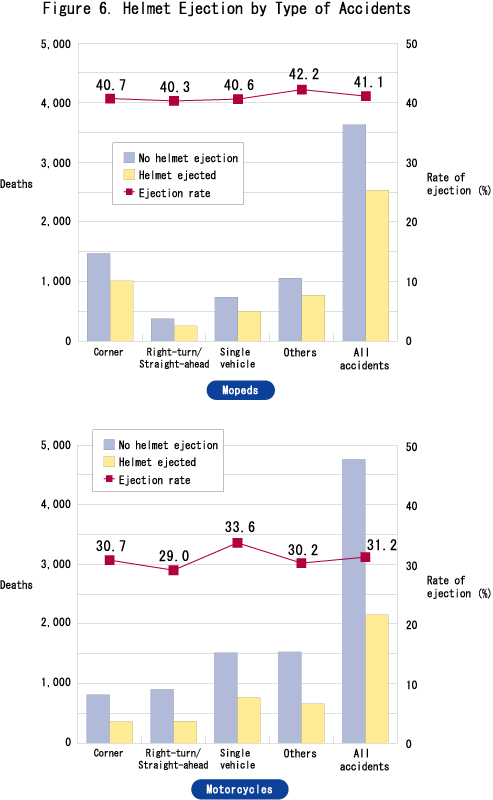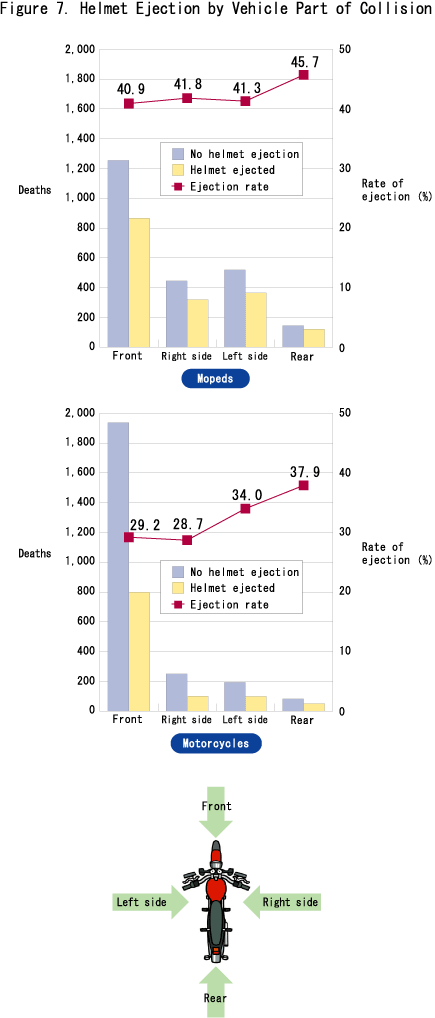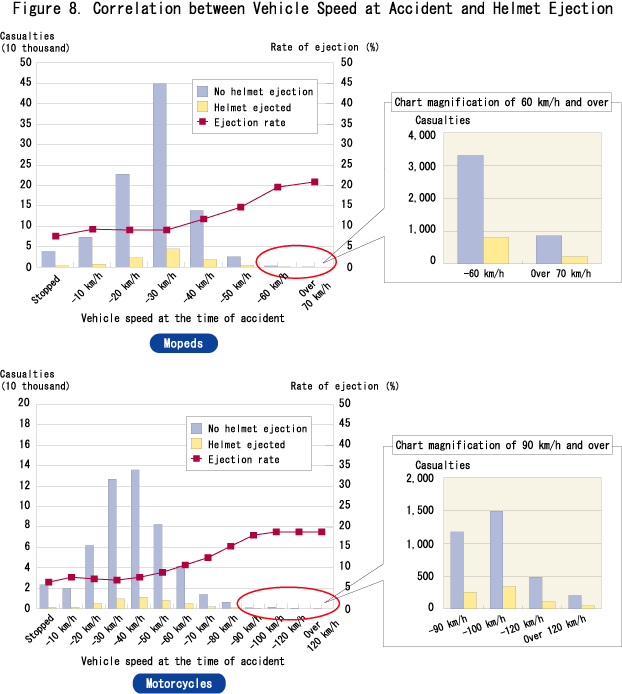
|
Figure 6 represents the deaths of two-wheeler riders and passengers by type of accident and by the presence or absence of helmet ejection, based on ten-year data from 1995 through 2004.
Of those who were wearing helmets, the percentage of those who suffered helmet ejection is indicated as "ejection rate". The number of accident victims whose helmets came off is larger in accident types that occur frequently, but there is not much difference by accident type in ejection rate, i.e., vulnerability to helmet ejection. The slightly large 33.6% ejection rate in single motorcycle accidents seems due to the fact that they include many accidents where speeding was a factor. |
|
|

|
|
| The correlation between helmet ejection and the part of the vehicle that suffered collision is illustrated in Figure 7. While helmet ejection is most numerous in frontal collisions, the ejection rate is larger in collisions in which mopeds and motorcycles were hit from the rear. Causal links between this tendency and helmet ejection are not yet clear, and this will be an important subject in future research on how to prevent helmet ejection. |
|
|

|
|
Analyzed next is the correlation between vehicle speed at the time of accident* and helmet ejection (Figure 8).
The ejection rate tends to rise with higher vehicle speed for both mopeds and motorcycles. It should be noted that a fairly stable ratio of helmet ejection was observed at the collision speed of 30 km/h and below: 9% for mopeds and 7% for motorcycles. Possible reasons for this are that some helmets tend to come off even at relatively small impact, and that some people wear helmets in such a way that they can slip off easily. Another noticeable point is that, among motorcyclists and passengers, the rate of helmet ejection in motorcycle accidents does not rise beyond an accident speed of 90 km/h. The reason for this is discussed later in Section 2-3.
* Vehicle speed at the time of accident is substituted by the speed at which riders were alerted to the danger of accident. |
|
|

|
|
|
UP
Back Next
|
